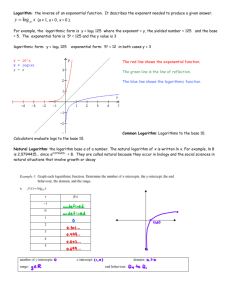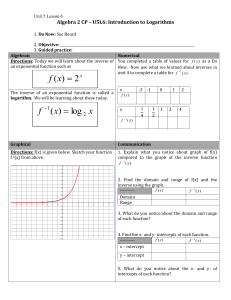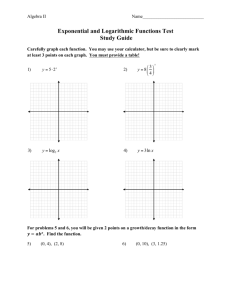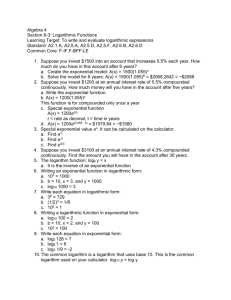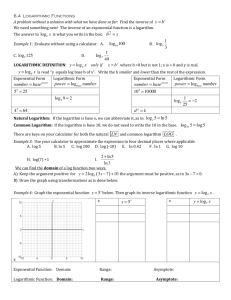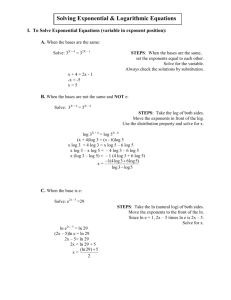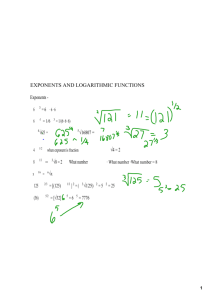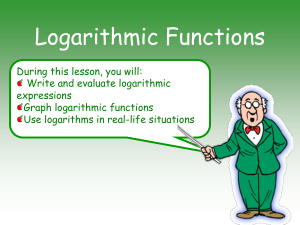2 EXAMPLE 3 EXAMPLE
advertisement
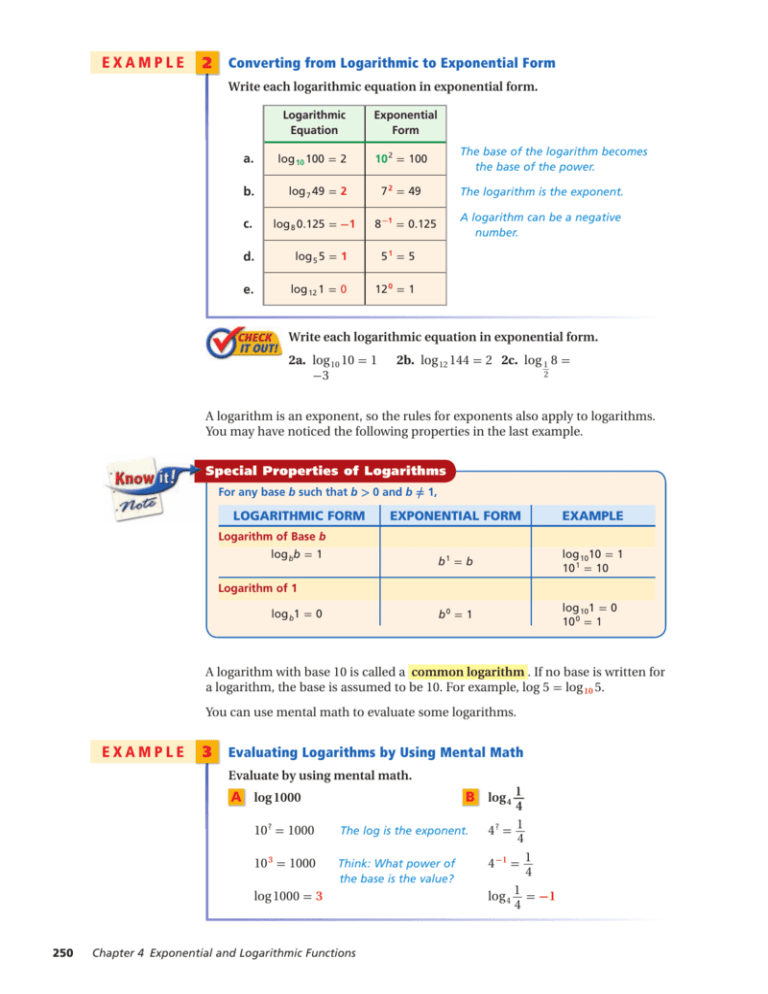
EXAMPLE 2 Converting from Logarithmic to Exponential Form Write each logarithmic equation in exponential form. Logarithmic Equation a. log 10 100 = 2 b. log 7 49 = 2 log 8 0.125 = -1 c. Exponential Form The base of the logarithm becomes the base of the power. 10 2 = 100 7 2 = 49 The logarithm is the exponent. A logarithm can be a negative number. 8 -1 = 0.125 d. log 5 5 = 1 51 = 5 e. log 12 1 = 0 12 0 = 1 Write each logarithmic equation in exponential form. 2a. log 10 10 = 1 -3 2b. log 12 144 = 2 2c. log _1 8 = 2 A logarithm is an exponent, so the rules for exponents also apply to logarithms. You may have noticed the following properties in the last example. Special Properties of Logarithms For any base b such that b > 0 and b ≠ 1, LOGARITHMIC FORM EXPONENTIAL FORM EXAMPLE b1 = b log 1010 = 1 10 1 = 10 b0 = 1 log 101 = 0 10 0 = 1 Logarithm of Base b log bb = 1 Logarithm of 1 log b1 = 0 A logarithm with base 10 is called a common logarithm . If no base is written for a logarithm, the base is assumed to be 10. For example, log 5 = log 10 5. You can use mental math to evaluate some logarithms. EXAMPLE 3 Evaluating Logarithms by Using Mental Math Evaluate by using mental math. A log 1000 10 ? = 1000 The log is the exponent. 10 3 = 1000 Think: What power of the base is the value? log 1000 = 3 250 1 B log 4 _ Chapter 4 Exponential and Logarithmic Functions 4 1 4? = _ 4 1 4 -1 = _ 4 1 = -1 log 4 _ 4
